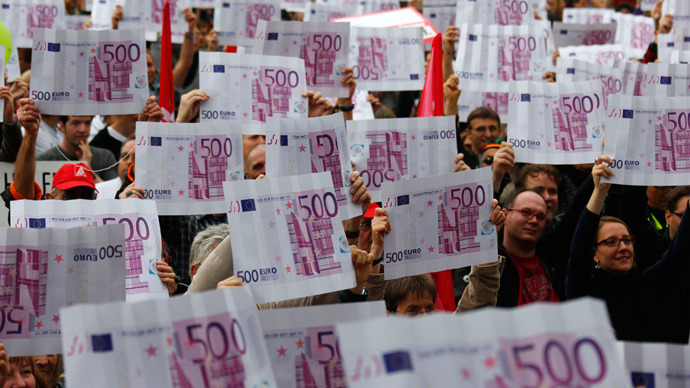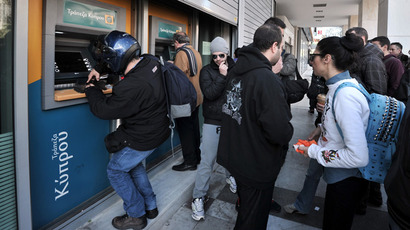Time to pull the plug on the ‘bin Laden’ 500 euro note – Bank of America

The banknotes are called by many Europeans as ‘bin Ladens’ because they are rarely seen by ordinary people, as they are often the illicit currency of criminals.
The debate to discontinue the €500 ($655) note is being revisited, this time by Bank of America analyst and former International Monetary Fund employee Athanasios Vamvakidis, the Wall Street Journal reported.
In a research note released on Tuesday, Vamvakidis argues pulling the high denomination bill from circulation would lead to a slight depreciation in the euro, which would benefit local exports, and in turn, increase GDP. Above all, discontinuing the banknote would directly target organized crime.
Because many of the banknotes are tied up in contraband
activity, this creates a ‘store of value’ according to Vamvakidis,
and is the core problem with the €500 bill, as they end up as
‘mattress money’. This money doesn’t circulate through the economy
in day to day transactions, and for this reason they should be done
away with.
A European Central Bank study found only one-third of these notes are actually used for transactions the rest lay dormant.
The €500 notes were first printed in 2002, and since their
introduction, only one-third are in circulation, according to a
study by the ECB. Because of their high value, they are used for
saving, not spending.
Another point of contention is fraud. In May 2012, the EU
confiscated 250,000 fake euro notes.
In May 2011, it was pulled from distribution in the United
Kingdom, after police traced over 90% of the banknotes to criminal
activity- from tax evasion to terrorism.
There is no clear message from the ECB that they plan to
eradicate the note.
Timing is everything
If the ECB were to follow the advice of Vamvakidis, timing is
everything, as they need to determine an appropriate transition
period. Too short, and people could literally lose money overnight,
and be left with worthless tender. Too long, the suspected criminal
demographic that hold a majority of the currency could find a way
to trade in their black market cash.
Vamvakidis proposes a month.
The catch is, if people want to cash in their ‘bin
Ladens’, they have to be able to prove the legitimacy of the
source, which, could be difficult for citizens and criminals
alike.
"It is very easy way to tax this illegal activity,” said Vamvakidis.
Bank of America suggested the ECB announce it will exchange the 500 euro banknotes for smaller bills up to a certain time and under the condition that their owners can prove the legal origin of the funds. This, according to the bank, would deprive criminals of much of their funds.
The ECB has said the ‘bin laden’ note plays an integral role in the European economy, and is not likely to make an exit anytime soon.
“High-denomination euro banknotes fulfil an important role as
a store of value,” ECB President Mario Draghi said last
year.














